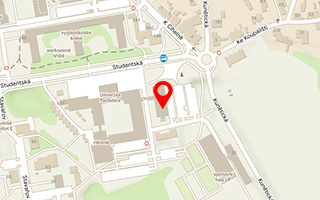Economic History of Late Medieval and Early Modern Europe (15th–18th Centuries)
The Institute of History is one of the few departments that systematically develops research on the economic history of the late Middle Ages and early modern period. The focus of research interest is the region of Central Europe, but with a significant overlap with other parts of the world, which is, of course, related to the global nature of the trade in precious metals at the time. The basic source research is not limited only to original archival sources (mainly accounting documentation, property records at the level of all social classes, the economy of towns, and noble estates, but also serfs), but also deals with material sources (the physical form of money, coin hoards, the history of monetary development). We consider a good knowledge of economic history to be the basis of all further historical research, since without an economic context it is difficult to interpret social, cultural, political, or diplomatic history, as well as the causes and consequences of wars and confessional conflicts. The research team, which includes PhD students, regularly presents the results of its research at major congresses and conferences, including the World Economic History Congress, World Numismatic Congress, and Numismatica Centroeuropaea, and in national and international scientific journals.
Leading scholar
Prof. Dr. Petr Vorel
Petr Vorel is a professor of early modern history who has been working for almost forty years, mainly on the history of Central Europe, the economic history of the early modern period, and the history of monetary development.
He is the author of around forty monographs and about two hundred articles in English, German, Italian, Polish, and Czech published in scholarly journals and memorial volumes. In the last decade his research has focused on the late medieval and early modern history of the Holy Roman Empire and on the financial and monetary crisis of Central Europe at the beginning of the 17th century.
His major source articles and books are published mainly in Czech; however, some of his more important works have already been made available in world languages. See, for example: From Medieval Multinational Empire to Early Modern National States (The Holy Roman Empire and Central Europe during the 14th–16th Centuries), in: Český časopis historický 121, 2023, 2, pp. 365–388; The function of the thaler in determining the exchange rates of European currencies in the second half of the 16th century, in: Wiadomośći Numismatyczne 66, 2022, 210, pp. 277–298; Economic and political consequences of limiting of the statutory maximum interest rate in Central Europe from 10% to 6% since 1543, in: A History of the Credit Market in Central Europe: The Middle Ages and Early Modern Period (London–New York 2021), pp. 177–187; Emperor´s Insolvency and the Economic causes of Beginning of the "Bohemian War" in 1618, in: Comenius: Journal of Euro-American Civilization 2021, 2, pp. 217–226; European merchant trading firms and the export of the precious metals from the Kingdom of Bohemia during the 16th century, in: Cheryl Susan McWatters (ed.), Mercantilism, Account Keeping and the Periphery-Core Relationship (London–New York 2019), pp. 49–60; Funding of the Papal Armyʼs Campaign to Germany during the Schmalkaldic War (Edition of the original accounting documentation “Conto de la Guerra de Allemagna” kept by the Popeʼs accountant Peter John Aleotti from 22 June 1546 to 2 September 1547), in: Theatrum Historiae 21, 2017, pp. 9–96; From the Silver Czech Tolar to a Worldwide Dollar (The Birth of the Dollar and its Journey of Monetary Circulation in Europe and the World from the 16th to the 20th Century) (New York 2013); La storia della piastra dʼargento di Urbano VIII (L’attività della zecca romana sul finire del pontificato di Urbano VIII e il catalogo dettagliato delle piastre d’argento pontificie degli anni 1634–1644) (Rome 2013); The War of the Princes: The Bohemian Lands and the Holy Roman Empire 1546–1555 (Santa Helena 2015).


